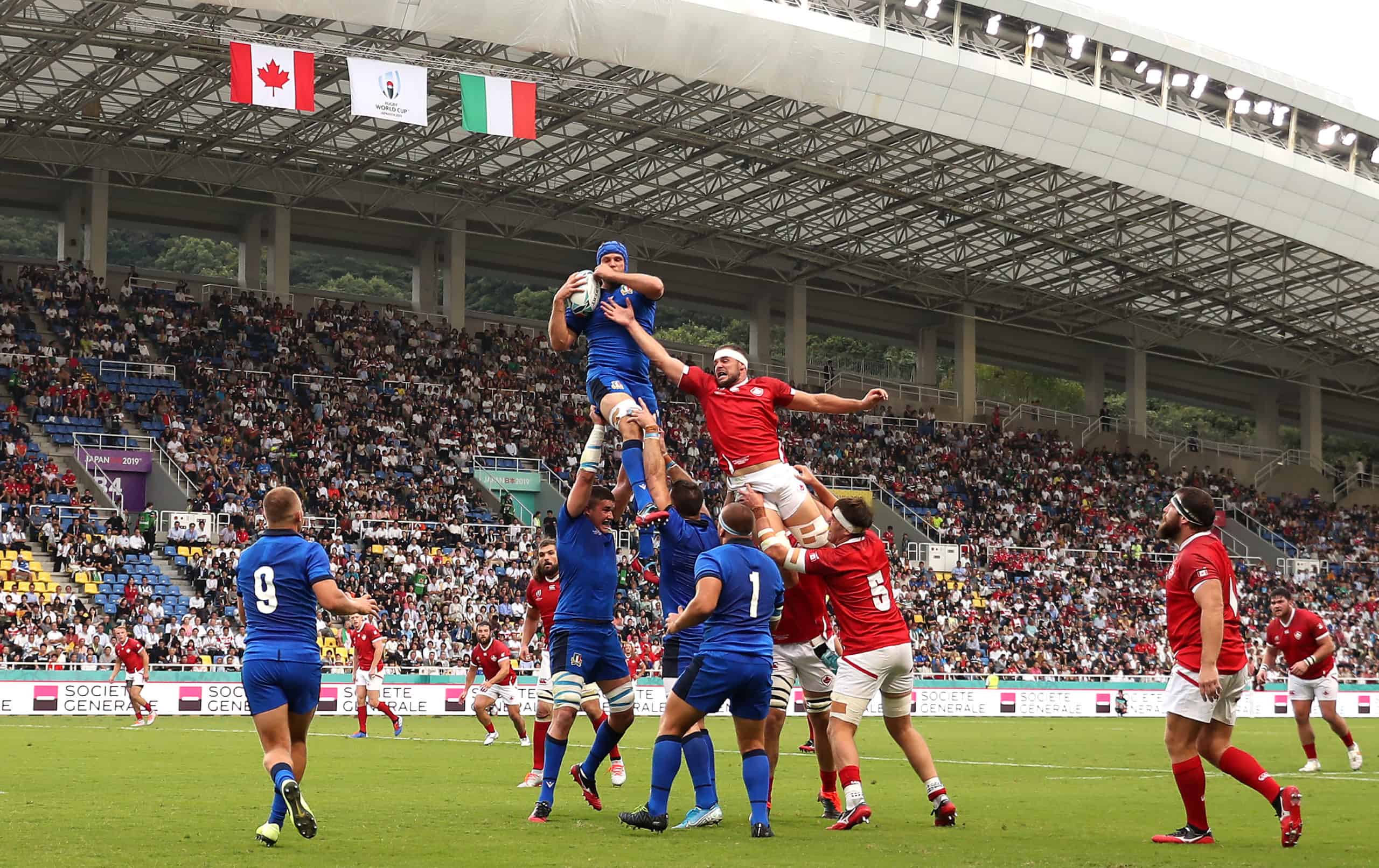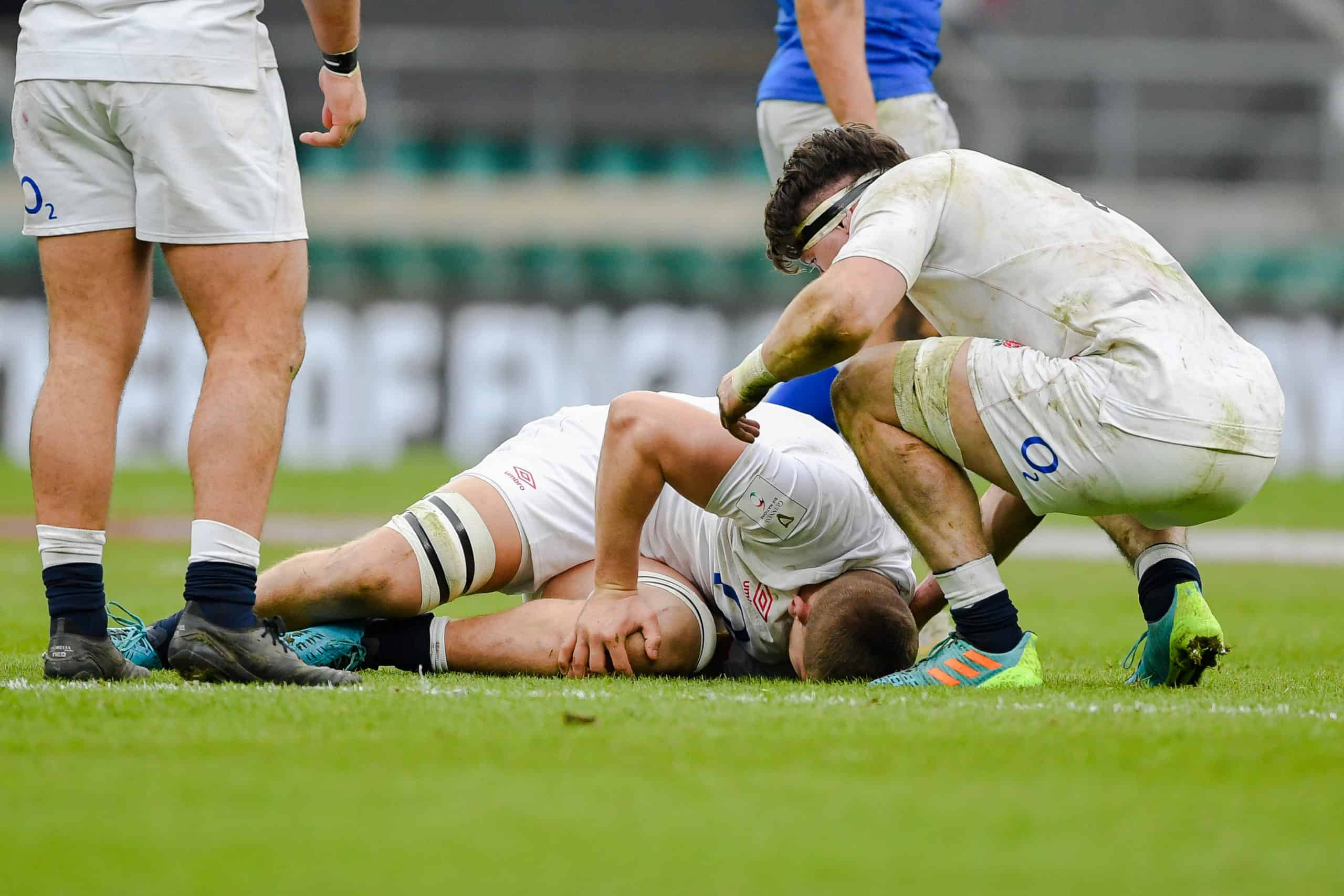When watching a game of rugby you will see player’s sporting all sorts of strapping and tape all across their bodies. One particular area that seems to be heavily taped is rugby player’s thighs. Let’s find out why!

Why do rugby players tape their thighs?
Rugby players particularly locks and back-rowers tape their thighs to help their teammates lift them in the lineout. The tape acts as a hold and allows them to lift the lineout jumper higher. Other players tape their thighs to provide support for injuries such as sprains and contusions.
How Does Taping Thighs Help In A Rugby Lineout?

Taping thighs allows the lineout lifter to establish a secure grip on the lineout jumper. With this grip the lifter can then launch the jumper high into the air allowing them to easily win the ball. The tape reduces the chance of the grip slipping and increases the maximum lifting height.
Trying to grip onto a lineout jumper’s sweaty and or wet thigh is not an easy task. In the old days before the use of tape player’s wouldn’t even try to lift via the thighs and instead would grab onto the player’s shorts.
The problem with lifting via a player’s shorts is that you are reducing the height the jumper can reach, making it difficult to win the ball. If rugby player’s could lift via the ankles they would but unfortunately, for lineout jumpers even the strongest lifter is not capable of launching a 120kg lock into the air by just grabbing onto his ankles.
Once team’s started using tape and lifting via the legs it quickly became the standard method as teams using the outdated shorts method couldn’t get their lifter high enough in the air, handicapping themselves.
How Do You Tape Your Thighs For A Rugby Lineout?
Rugby lineout jumpers tape their thighs by:
- Place lifting block slightly above your knee
- Wrap around your thigh and lifting block with elastic tape
- Secure lifting block and tape by wrapping electrical tape under and around lifting block
Taping your thighs for rugby is super easy. The only slightly challenging step is the first one. If you are having trouble keeping the lifting block in place while also taping just grab a teammate to hold it for you. The whole process can be completed within a few minutes.
Once you are taped up go and take a few practice jumps and ask your lineout lifters how the lifting blocks feel and check if they stay in place. You may need to tighten the strapping or slightly move the lifting blocks.
Is A Rugby Lineout So Important That Players Tape Their Thighs?
A rugby lineout is a fundamental aspect of the game and players will use any advantage they can get to win the ball for their team, including taping their thighs.
In an average game of rugby there are over 20 lineouts. Many of these lineouts happen deep in an opponent’s territory which means if a side can consistently win a lineout they can give themselves an amazing opportunity to score. Lineouts are also a fantastic scoring opportunity because the defending side’s backline must stand 10m back from the lineout which creates space for the attacking backline to move and run set plays. It becomes much harder to stop stampeding backs who have a full head of steam.
Why Else Do Rugby Players Tape Their Thighs?
Rugby players also tape their thighs to heal from injuries and to stop current injuries from worsening. Players use a variety of different taping including kinesiology and elastic tape.

Rugby players often suffer contusions, sprains and tears to different muscles in their thigh and legs. These injuries are usually minor so many athletes choose to play through them. To try to limit these injuries worsening and to proivde a bit of comfort to sore muscles rugby athletes will strap up and place tape on their thighs.
Are Thigh Injuries In Rugby Common?
Thigh injuries are common in rugby and make up 10% of total injuries. Muscles such as the quadriceps and hamstring are particularly susceptible to injury. 40% of thigh injuries are contusions and strains while 30% are muscular strains.
Rugby places an enormous stress on the legs and thighs. Due to this it is no wonder that you see so many players with tape all over their legs and thighs. If you place rugby long enough you will eventually hurt your thigh. Luckily, most rugby related thigh injuries are minor such as bruising, sprains and strains. These injuries can be quickly healed with some icing, compression and a few days rest. See here for more information on rugby injuries.
When facing these minor thigh injuries many rugby players will just grit their teeth and continue playing and training. There is a stoic culture underpinning rugby and players are expected to compete through minor injuries such as contusions and strains.
Conclusion
The mystery of why rugby players tape their thighs and has been solved! Next you time are watching a rugby game keep a close eye on the lineout and watch how the lifters grab onto the tape and throw the jumpers in the air. Also keep a lookout for non lineout jumpers who have tape on their legs as they are most likely carrying an injury which could effect the outcome of the footy match. With so many rugby injuries affecting the thighs and the lineout being a critical component of the sport expect to always see rugby athletes sporting tape on their legs.
